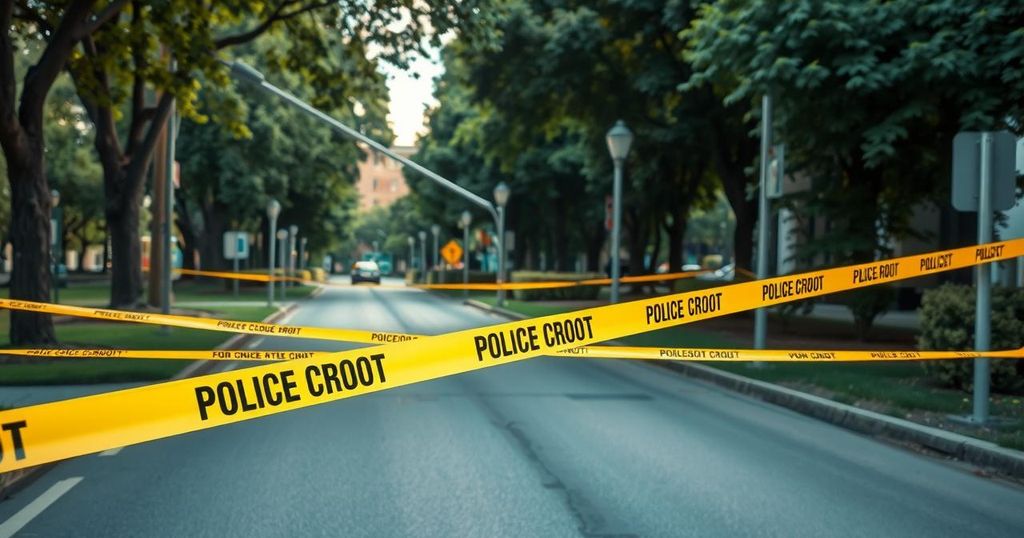Political Violence on the Rise in the U.S.: A Troubling Trend Emerges
Political violence in the U.S. is on the rise, with alarming incidents such as the assassination of lawmakers and attacks linked to extremist ideologies. A recent surge dating back to the January 6 Capitol riot has been exacerbated by polarizing rhetoric. Experts warn of a return to levels of violence reminiscent of the 1960s, highlighting the urgency of addressing the cultural factors at play. Political affiliations often blur in these violent acts, leading to increased distrust and division.
Political violence in the U.S. has surged in recent years, with a grim history woven into its fabric. From assassinations to shootings, motives behind such actions are often complex and sometimes disturbing. An assassination of a Minnesota lawmaker and her husband, alongside another lawmaker’s shooting, has drawn attention to this unsettling trend. This wave of violence also includes recent attacks such as the killing of two Israeli embassy staffers in Washington, D.C., alongside firebombings aimed at state representatives and rallies.
There seems to be a dark pattern emerging; the mass shootings in Pittsburgh, El Paso, and Buffalo were driven by a belief in conspiracies regarding a grand Jewish plot to replace white individuals. This insidious ideology has found a home amongst some far-right groups that echo rhetoric from political leaders. The Anti-Defamation League noted that all of the political killings between 2022 and 2024 were perpetrated by right-wing extremists until a notable shift at the start of 2025 marked by an attack linked to ISIS.
Experts like Jacob Ware from the Council on Foreign Relations highlight this uptick across various ideologies, stating, “It feels more random and chaotic and more frequent.” Past years have seen levels of political violence reminiscent of the 1960s and 1970s – periods marked by the tragic assassinations of numerous civil rights leaders and political figures. The current administration’s response to extremist threats appears lax, and critics believe they must scrutinize the effectiveness of counterterrorism policies.
Following the January 6 Capitol riot, which former President Trump downplayed and subsequently pardoned those involved, the frequency and intensity of political violence seem to have escalated. Dallek, an expert on extremism, noted these actions delivered a strong message to potential offenders that violence might not only be tolerated but could be rewarded if they align with Trump’s ideologies.
Nevertheless, the motivations for political violence are not always clear-cut. A recent car bomb incident at a Palm Springs clinic illustrated this, as the suspect had esoteric beliefs rather than allegiance to any political ideology. Following violence, reactions often serve as fuel for further division, with partisans quick to claim the perpetrator is affiliated with the opposing side; this reflects the growing distrust and polarization.
The suspect in the Minnesota case, Vance Boelter, had connections to past Democratic policies, yet this did not stop critics from trying to label him a liberal. Similar claims were made during previous attacks where the nuances of ideological affiliation were overshadowed by opportunistic narratives. The reactions to events like the hammer attack on Paul Pelosi, framed as an anti-liberal act rather than the act of an individual steeped in conspiracy theories, continue to highlight this trend.
In the aftermath, key political figures like Nancy Pelosi resist the political division, warning against using violence as a political tool. However, Trump’s rhetoric and strategies following protests have raised eyebrows, with many seeing them as escalations rather than attempts at resolution. Dallek aptly points out, “It feels as if the extremists are in the saddle.” This growing atmosphere of violence contrasts sharply with democracy’s ideals and stresses the urgent need to confront the underlying issues fueling such actions.
Political violence in the U.S. presents a troubling trend, exacerbated by divisive rhetoric and misguided ideologies. The array of recent attacks ranging from mass shootings to high-profile assassinations paints a picture of increasing instability. With the political climate becoming more volatile and responses often intensifying divisions rather than healing them, experts warn that the danger could grow if left unchecked. It remains essential to foster understanding and combat the factors that lead to such extreme actions, aiming for a more united society.
Original Source: apnews.com
